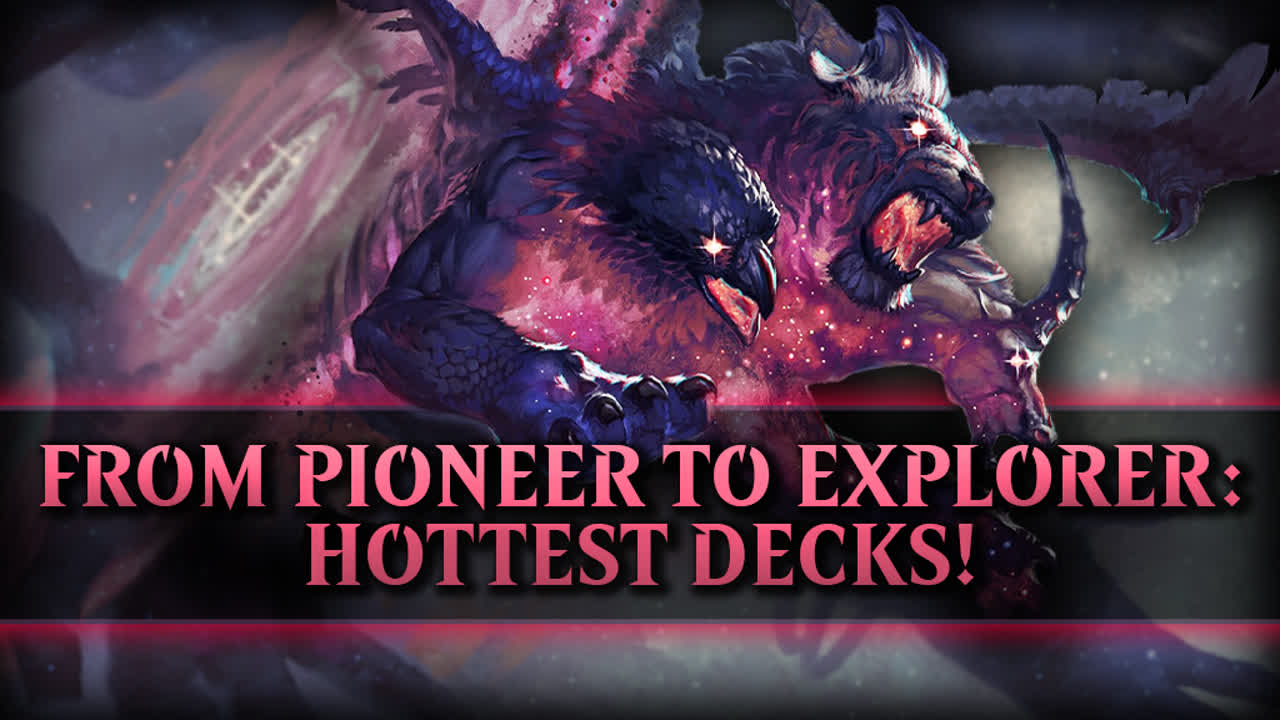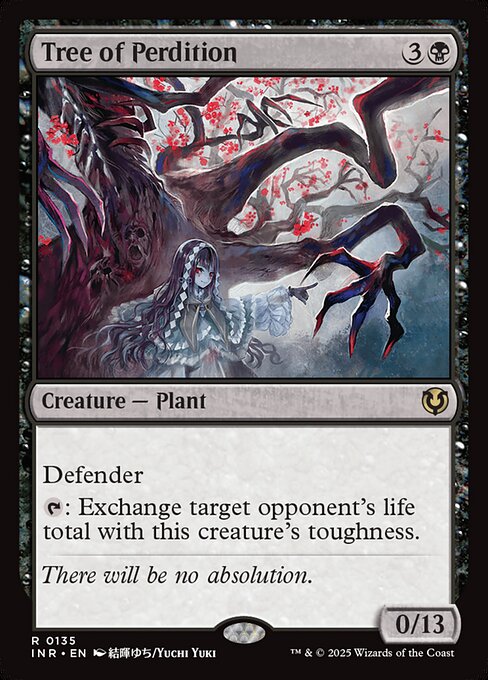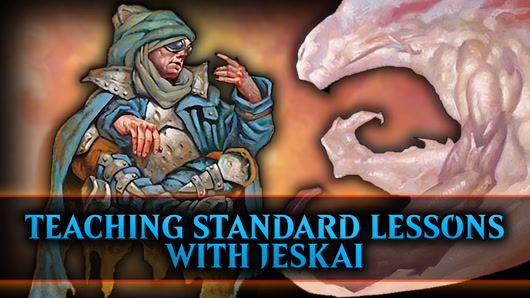Welcome Magic lovers!
Today we embark on a bit of a detour from our usual focus on the Standard format in order to take a look at the landscape of the Pioneer metagame, now that the massive 1800+ player Regional Championship Washington D.C. has concluded, and how it may impact players who are engaging with the as-yet-unsanctioned Explorer format on Magic Arena.
Regional Championships are massive affairs these days, with attendance and level of competition landing somewhere between a Pro Tour and the old Grand Prix system that many players enjoyed. With 1817 players enrolled in the tournament, it was one of the largest competitive events of the year, and thus yielded a ton of data, deck lists and direction for the Pioneer format moving forward. For Magic Arena players who aren't actually able to play Pioneer yet, there may yet be some interesting things to glean which could be applied to the pseudo-format that is Explorer.
Rakdos Cauldron
Going into the tournament, it felt like Pioneer of yesteryear, with Rakdos being the most played archetype across Magic Online challenges and Regional Championship Qualifiers. The interesting thing about Rakdos, however, is how many different forms the deck may take. Let's start at the top of the Regional Championship standings with the eventual winner of the tournament, Cory Lack and his Rakdos Cauldron deck:
Featuring the latest innovation to aggressive Rakdos strategies in the form of the Tree of Perdition combo, which allows the pilot to cast new, powerhouse Duskmourn creature, Fear of Missing Out on turn two, discarding the Tree. Turn three, simply slam Agatha's Soul Cauldron and use it to exile Tree of Perdition from the graveyard in order to give Fear of Missing Out the ability to tap and reduce the opponent's life total to just four, which is now the Fear's toughness. Finishing the opponent off from there is typically pretty straightforward. Voldaren Thrillseeker is typically the easiest way to do the last few points of damage, either by sacrificing the Thrillseeker itself, or simply tapping Agatha's Soul Cauldron to remove one from the graveyard and bestow its sacrifice ability on any other creature.
Another new, Duskmourn card, Marvin, Murderous Mimic, also shows up here to provide redundancy for the combo as well as a way to still drastically reduce the opponent's life total without using the graveyard, as playing Marvin into Tree will allow Marvin to activate using the Tree's ability and reduce the enemy to just two life points.
Backed up by a pile of disruption in the form of a playset of Thoughtseize and a couple of Duress in the main deck, plus a set of Fatal Push to interact with the creature-based decks, means this deck can either force through its combo or stave off a more aggressive opponent as it buys the time it needs to set up. Sequencing with this deck can be difficult, so plenty of practice is recommended.
Explorer playable: 100%
This deck is completely intact on Magic Arena, making it a great choice for those getting into the Explorer format.
Rakdos Transmogrify
A different version of the Rakdos shell also did extremely well, ending up finishing in the runner-up spot of the Regional Championship tournament, Rakdos Transmogrify.
As its name implies, Rakdos Transmogrify is a deck constructed around the red sorcery, Transmogrify, and its power to transform a lowly token creature into an Atraxa, Grand Unifier on turn four.
Boasting a twenty-five-land mana base as opposed to the Rakdos Aggro shell's twenty-three should already give one an inkling as to how this deck plays out. It's much more of a midrange shell, incorporating additional removal in the form of Torch the Tower, Sheoldred's Edict, and Bitter Triumph, to supplement the ubiquitous Fatal Push. The standard playset of Thoughtseize is, of course, a must here, as well as the pair of Duress to hamper the powerful Azorius Control decks.
All this removal and disruption is there to buy the deck time to set up its combo by getting either a Case of the Stashed Skeleton, Fable of the Mirror Breaker or Ob Nixilis, the Adversary into play in order to produce a token to be sacrificed to Transmogrify once the time is right. With a pair of Atraxa, Grand Unifier being the only creature in the deck, it means the Transmogrify will never miss, and always put the giant, Phyrexian angel into play every time it resolves.
Case of the Stashed Skeleton is particularly potent here, as sacrificing the token leaves the pilot with no suspected skeletons on the battlefield, triggering the solved condition on the Case, allowing one to search their library for another Transmogrify, additional removal, or a hand disruption spell to protect the newly formed Atraxa. Against most decks, Atraxa is nigh-unkillable, as it dodges the most commonly played removal in the format.
Explorer playable: 99%
As the only card missing on Magic Arena is the land, Urborg, Tomb of Yawgmoth, which should be relatively straightforward to replace without losing too much consistency, this deck is essentially Explorer-legal on Magic Arena.
Enigmatic Incarnation
Thankfully, the top 4 of the Regional Championship wasn't completely dominated by Rakdos, as we see longtime format staple, Enigmatic Incarnation make an appearance here, featuring plenty of new toys from the latest set.
The quintessential 'toolbox' deck, this five-color, eighty-card monster is built around the key enchantment, Enigmatic Incarnation, which allows its pilot to sacrifice another enchantment on the battlefield in order to pull a creature out of their deck with mana cost equal to one plus the cost of the originally sacrificed enchantment. It sounds complex, but in practice it's quite straightforward, as it allows its pilot to keep sacrificing enchantments to put larger and larger threats onto the battlefield. Creatures with enter-the-battlefield triggers shine here as they're being put directly into play, which means the creature suite is a toolbox of singletons, from silver bullet cards like Kutzil's Flanker and Knight of Autumn, all the way up to Atraxa, Grand Unifier and Titan of Industry.
Since the deck is playing creatures and enchantments across all colors, its mana base is its Achilles' Heel, with a staggering thirty-four lands with almost a third of them coming into play tapped. That means cheap removal is a must in order to survive long enough to get the Enigmatic engine up and running. Leyline Binding, Get Lost, Lightning Helix, March of Otherworldly Light, Torch the Tower, Portable Hole and Chained to the Rocks give the deck a wide range of options when dealing with the opponent's threats. New addition Roaring Furnace // Steaming Sauna is a nice one-two punch, first acting as cheap removal then turning into a draw engine against other slow control decks in the late game. Combined with a playset of Up the Beanstalk, it means that this deck has no trouble keeping up in the card advantage department.
The new, Duskmourn additions that really shine in this deck are Overlord of the Hauntwoods and Overlord of the Boilerbilges, as they not only impact the board when they first arrive, but they are also able to be sacrificed to Enigmatic Incarnation after they've had their effect. A turn three Overlord of the Hauntwoods into a turn four Enigmatic Incarnation allows the pilot to sacrifice the Overlord on end step and slam a powerful six-mana creature into play like Bonny Pall, Clearcutter or Overlord of the Boilerbilges. On the next turn, one can then sacrifice the Overlord of the Boilerbilges to find and play Atraxa or Titan of Industry, as the situation demands.
This potent toolbox deck can obviously be configured in many different ways, and finding the right pieces to put in one’s arsenal can be a tricky metagame call. Be aware of the decks one expects to face before making those last few cuts or additions to the list.
Explorer playable: 85%
Not having access to Chained to the Rocks really does hurt the deck, as it's a crucial piece of removal in the Enigmatic Incarnation shell. However, at only two copies, the deck can almost certainly function adequately without them.
There's no more room to talk about Pioneer in this article, but hopefully some Magic Arena players looking to get into Explorer can use these three powerful decks as a template for where to start!



























